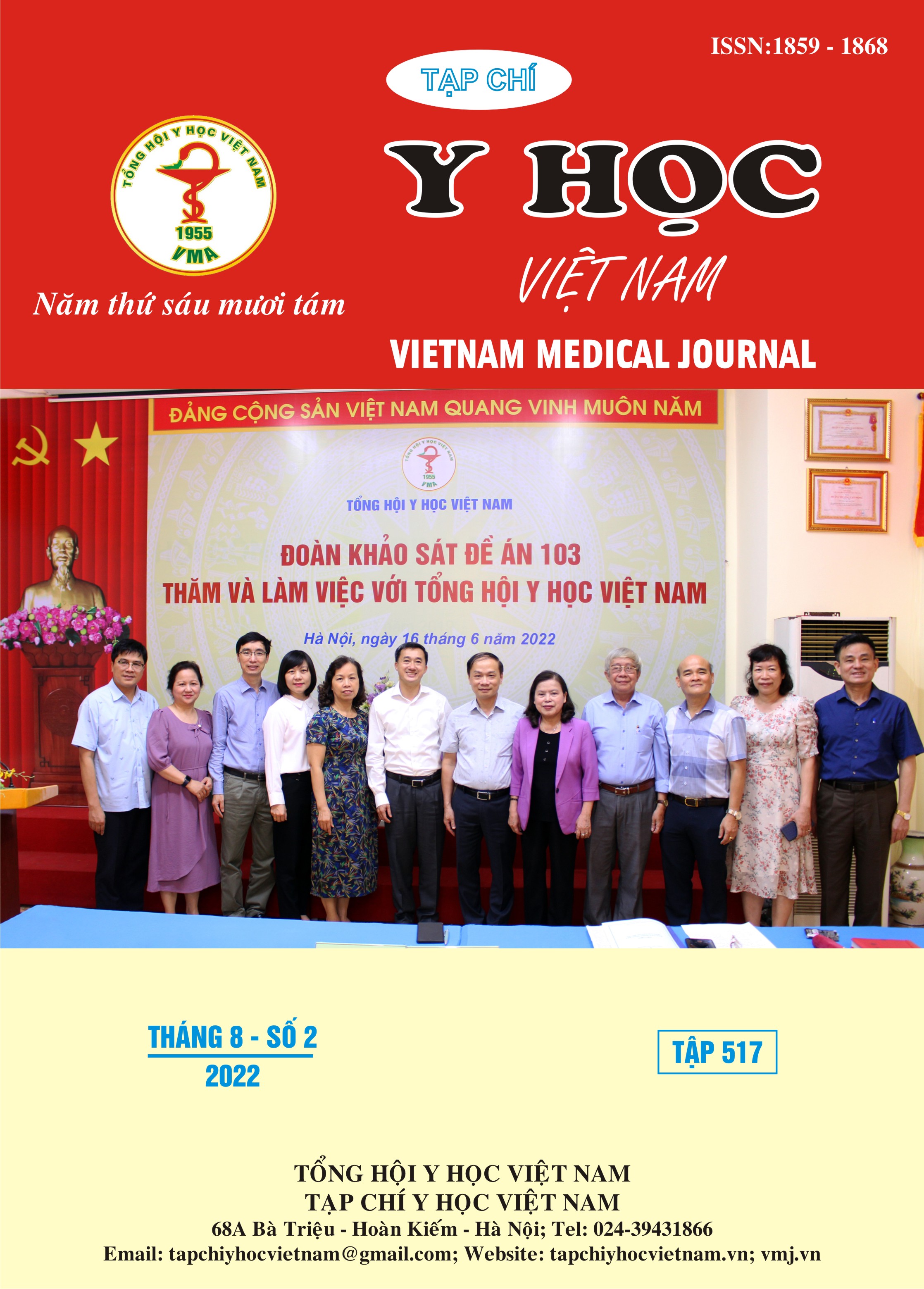ANTIBIOTIC RESISTANCE OF HAEMOPHILUS INFLUENZAE AND TREATMENT RESULTS IN PNEUMONIA DUE TO HAEMOPHILUS INFLUNEZAE IN VIETNAM NATIONAL CHILDREN’S HOSPITAL
Main Article Content
Abstract
Backgroud: H.influenzae is one of the main pathogens that cause community- acquired pneumonia in children. The aim of our study was to estimate the prevalence of H.influenzae antibiotic resistance and the results of treatment among patients suffering from pneumonia caused by H.influenzae in Vietnam National Children’s Hospital. Methods: The study included 151 children with pneumonia caused by H.influenzae from 1 month to 15 years old treated at the Respiratory Center - Viet Nam National Children's Hospital from January 2020 to December 2021. Results: The antibiotic resistance rate of H.influenzae was very high with ampicillin 92.1%; Amoxicillin 92.7%; Cefaclor 84.4%; Cefuroxime 80.1%; Co-trimoxazole 94.7%; reduced sensitivity to Amoxicillin/A.Clavunanic (603%); and not susceptible with Cefixime 71.9%; Azithromycin 54.4%. However, H.influenzae is still susceptible to Ceftriaxone (98.7%); Ciproflozaxin (95.4%) and Meropenem (100%). Treatment results: 7.9% of patients were fully recovered from the disease, and 92.1% of patients were not fully recovered and no patients progressed to severe disease or died. The mean of hospitalization was 7.1 ± 4.4 days. Conclusions: H.influenzae has a very high rate of resistance to commonly used antibiotics to treatmen of pneumonia. Inappropriate use of antibiotics and overuse of antibiotics increase the rate of antibiotic resistance of H.influenzae bacteria in particular and pathogenic bacteria in general. H.influenzae is also highly susceptible to Ceftriaxone and Meropenem. The treatment results were good, there was no patient worsening and no patient died. Keywwords: Haemophilus influenzae, pneumonia, children, antibiotic resistance.
Article Details
Keywords
Haemophilus influenzae, pneumonia, children, antibiotic resistance
References
2. Matthew S. Kelly, Thomas J. Sandora (2015). Community-Acquired Pneumonia. Nelson Textbook of Pediatrics 20th ed, Chapter 400, 2088 - 94.
3. Đỗ Thị Thanh Xuân (2000). Nghiên cứu đặc điểm lâm sàng và điều trị bệnh viêm phổi do vi khuẩn kháng kháng sinh ở trẻ em. Luận án Tiến sỹ, Đại học Y Hà Nội
4. Hoàng Thị Huế, Lê Thị Kim Dung và Phạm Trung Kiên (2013). Khảo sát tình hình sử dụng kháng sinh trong điều trị nhiễm khuẩn hô hấp cấp tính ở trẻ em tại bệnh viện Đa khoa trung ương Thái Nguyên, Tạp chí Y học Thực Hành, 876, tr. 152-155.
5. Lê Thị Hồng Hanh, Lê Thị Minh Hương, Nguyễn Duy Bộ (2016). Đặc điểm lâm sàng, cận lâm sàng và tính kháng kháng sinh của viêm phổi do Haemophilus Influenzae tại Bv. Nhi Trung ương. Tạp chí Y học thực hành số 6 (1014), tr 2-5.
6. Trần Thị Kiều Anh (2021). Nghiên cứu tính kháng kháng sinh của vi khuẩn gây viêm phổi ở trẻ 2 tháng đến 5 tuổi tại bệnh viện Sản Nhi Nghệ An năm 2021. Tạp chí Y học Việt Nam, tr 297-301
7. WHO (2014). Revised WHO classification and treatment of childhood pneumonia at health facilities. World Health Organization, pp. 19.
8. Robert S. Daum (2015). Haemophilus influenzae. Nelson Textbook of Pediatrics 20th ed, 1371-5.
9. Clinical and Laboratory Standards Institute (2017). Performance standards for antimicrobial susceptibility testing; 27th ed, pp 68-71.
10. Phạm Văn Hoà (2017). Nghiên cứu đặc điểm dịch tễ học lâm sàng và tính kháng kháng sinh của viêm phổi do vi khuẩn Haemophilus influenzae ở trẻ em tại bệnh viện Nhi Trung ương. Luận văn thạc sĩ, Trường Đại học Y Hà Nội


